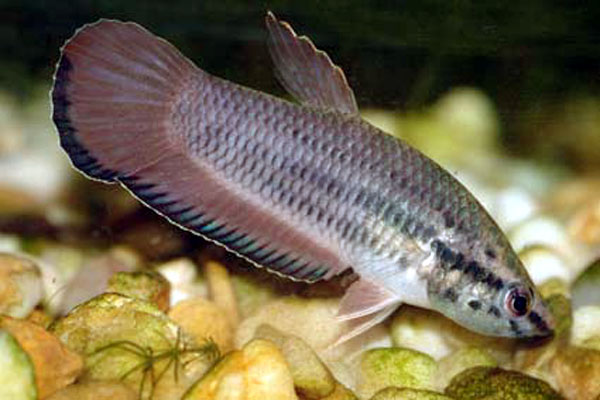| Osphronemidae (Gouramies), subfamily: Macropodusinae |
| 3.49 cm SL (male/unsexed) |
|
benthopelagic; freshwater |
| Asia: central Sumatra, Indonesia. |
|
Dorsal spines (total): 1-2; Dorsal soft rays (total): 7-8; Anal spines: 2-2; Anal soft rays: 19-21. This species is closely related to Betta picta from Java where it can be distinguished in the following characters: fewer dorsal fin rays (mode 8 vs. 9); fewer lateral scales (mode 27 vs. 28); dorsal fin origin above 11-12th lateral scale (vs. 12-14th); anal fin origin below modal 6th lateral scale (vs. 7th); fewer predorsal scales (mode 19 vs. 20); slightly greater anal-fin base length (46.5-50.3% SL vs. 42.6-48.4); anal and caudal fins with reddish distal band in live male (vs. bluish); iridescent greenish-blue opercle scales (vs. yellow-gold); in preserved specimens, male with distinct dorsal transverse bars (vs. faint); male with distinct dark anal distal margin wide (vs. narrow); male without elongated median caudal fin rays (vs. presence); female with distinct caudal transverse bars (vs. very faint or absent); dorsal head view narrow (vs. broad); thick preorbital black stripe (vs. narrow); and the distance between posterior part of anal fin to lower part of caudal narrow (vs. wide) (Ref. 56386). |
| Typically found among submerged bank vegetation, in near stagnant waters, with pH 4.7-6.8. Latin word falx means scythe, alluding to the continuous curved shape of the broad anal and caudal distal margins of a male in display. Caudal fin rounded. |
|
Least Concern (LC); Date assessed: 17 January 2019 Ref. (130435)
|
| harmless |
Source and more info: www.fishbase.org. For personal, classroom, and other internal use only. Not for publication.
